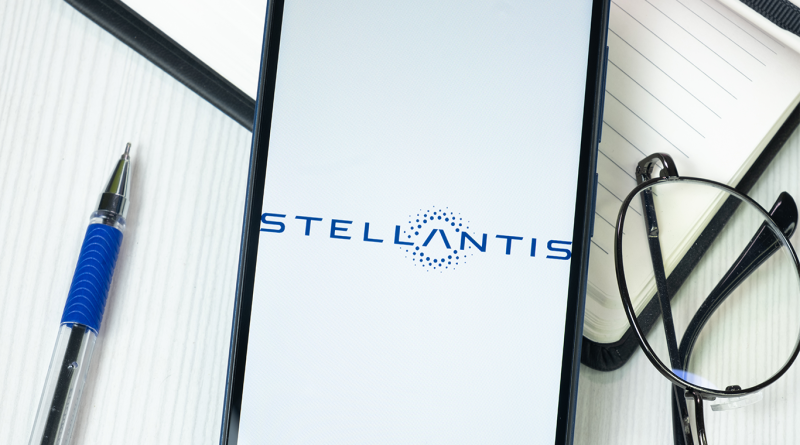Stellantis and Infineon Forge EV Tech Frontier
The new partnership between Stellantis and semiconductor leader Infineon highlights the role of advanced semiconductor technology in EV manufacturing—particularly in power conversion and distribution. With Infineon’s cutting-edge components—PROFET™ smart power switches, silicon carbide (SiC) semiconductors, and AURIX™ microcontrollers—the partnership aims to develop modular, scalable solutions that integrate seamlessly into Stellantis’s production of next-gen EVs.
Central to this initiative is Stellantis’s ‘Dare Forward 2030’ strategy, a forward-looking plan targeting enhanced production efficiency, sustainable vehicle architectures, and secure, reliable supply chains. Stellantis seeks to ensure a steady supply of critical semiconductors, while Infineon leverages its expertise to push EV production boundaries.
Innovating manufacturing for scalable, software-defined vehicle architectures
Stellantis’s approach involves developing software-defined vehicle platforms, a strategy that prioritizes adaptability, simplified production, and cost-effectiveness. Central to this strategy is the STLA Brain, Stellantis’s proprietary vehicle architecture that emphasizes software-based controls and modular designs. This setup allows manufacturers to adapt components more easily, enhancing flexibility in production and creating new opportunities to update vehicle systems through software rather than costly hardware replacements.
The Stellantis-Infineon partnership is essential here, integrating Infineon’s advanced semiconductor solutions into the manufacturing process. These components—specifically PROFET™ smart power switches and AURIX™ microcontrollers—enable reliable power distribution and efficient control of EV systems, essential for streamlined, high-volume manufacturing. For example, the PROFET™ switches allow precise control over power distribution across the vehicle’s systems, reducing the need for additional components and simplifying assembly lines.
By reducing hardware complexity and introducing software-defined controls, Stellantis can accelerate production cycles, improve quality control, and reduce overall production costs. Infineon’s silicon carbide (SiC) technology adds a layer of energy efficiency to Stellantis’s EVs, benefiting end consumers with extended vehicle ranges and reducing production energy requirements and costs.
The role of Infineon’s semiconductor technology in efficient EV production
Infineon’s contributions to the Stellantis partnership focus on three core semiconductor technologies: PROFET™ smart power switches, silicon carbide (SiC) semiconductors, and AURIX™ microcontrollers. These innovations, while designed to improve EV power distribution, bring substantial manufacturing advantages, enhancing both production efficiency and product reliability.
PROFET™ Smart Power Switches
These switches control high-power systems precisely, integrating multiple power distribution functions into a single device. For Stellantis, using PROFET™ power switches reduces the number of components in EV assemblies. This streamlines manufacturing, decreasing complexity and cost, and enabling Stellantis to produce more vehicles without a proportional increase in labor or material costs. Built-in protection mechanisms also minimize overheating or circuit failures during production, enhancing output quality.
Silicon Carbide (SiC) Semiconductors
Known for high thermal conductivity, SiC semiconductors withstand high temperatures and voltages without compromising performance. In EVs, SiC semiconductors significantly enhance power efficiency, optimizing power flow across systems. This improves production cost efficiency, allowing smaller, more compact power systems to deliver the same or greater performance than traditional silicon-based components. Furthermore, SiC’s ability to operate at higher frequencies reduces passive components (like capacitors), lowering material costs and physical footprint.
AURIX™ Microcontrollers
These microcontrollers provide secure and efficient control over many EV electronic functions. AURIX™ chips are central to managing Stellantis’s STLA Brain platform, enabling remote diagnostics, over-the-air updates, and real-time power system monitoring. By deploying AURIX™ microcontrollers, Stellantis can reduce reliance on physical diagnostics, allowing for software improvements during production or post-purchase.
Establishing the Joint Power Lab for innovation in EV power systems
The Stellantis-Infineon Joint Power Lab, a dedicated facility focused on scalable and modular EV power systems, pushes the limits of traditional EV manufacturing. manufacturing and make EV production more efficient and cost-effective.
The lab supports developing modular power units standardized across multiple EV models, simplifying manufacturing. This modular approach allows Stellantis to produce various vehicle types without redesigning power systems for each model. The lab also focuses on creating power systems resilient over extended lifecycles, reducing maintenance frequency and production downtime.
At the Joint Power Lab, Stellantis and Infineon test configurations, identify bottlenecks, and optimize power unit production. This testing environment accelerates the shift from prototyping to full-scale production, helping Stellantis bring new EV models to market faster. The lab’s emphasis on scalability enables Stellantis to ramp up production as needed, supporting high-performance passenger cars and utility-focused electric fleets alike.
Industry-wide impact on manufacturing and semiconductor supply chains
The Stellantis-Infineon collaboration extends beyond individual innovation, impacting the automotive manufacturing sector and semiconductor supply chains. As demand for EVs surges, automakers face mounting pressure to secure reliable semiconductor sources—critical for EV-specific power systems. This partnership addresses these supply chain challenges directly, promoting resilience and innovation.
Infineon’s commitment to providing specialized automotive semiconductors supports Stellantis’s production continuity without the disruptions that have impacted the industry. This approach encourages secure, localized production, fostering technological specialization and encouraging localized manufacturing hubs.
The partnership also underscores efficiency in EV manufacturing, critical for global EV adoption. Advanced semiconductor technologies reduce material waste, energy consumption, and production costs, savings passed down to consumers. Production efficiency also impacts timelines, allowing Stellantis to bring new models to market swiftly and respond to trends. Infineon’s SiC semiconductors also improve energy efficiency, while Stellantis’s modular architecture reduces electronic waste, setting benchmarks for cleaner manufacturing.
Sources:
